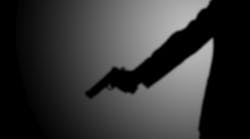Six months into 2019, the United States is experiencing an average of two mass shootings per month.
Mike Bewley, safety manager at the public works department of Austin, Texas, conveyed the importance of preparing workers for active shooting incidents to Safety 2019 attendees.
According to the Federal Bureau of Investigation (FBI), a mass shooting is defined as an incident in which four or more lives are claimed by the perpetrator.
The shooter's main goal is multiple casualties in a short span of time. The majority of mass shooters strategize for years before taking action. They are not looking to take hostages and they are not looking to negotiate, Bewley said.
"These guys know they're on the clock, and law enforcement is going to be there in about 10 minutes," he said. "Because of that, they're not going to stop searching for victims. He's probably going to shoot everything in sight."
Bewley's insights into the "Run, Hide, Fight" preparedness method provided attendees a basis for their emergency response plans.
Run
"The goal is to get those sirens inbound to your location," Bewley said. "When the shooter hears those sirens, they're going to think more about shooting themselves than shooting others."
- At first indication that there is a shooting, leave the area if possible.
- Encourage people around to leave with you, but do not delay your exit.
- Once you're out of the area of building, call 911 if you have your cell phone.
- Tell the dispatcher the following: "Active Shooter," then the address
- Keep moving away from the building. You cannot become a target if the shooter cannot see you.
- If police are approaching the building as you exit, hold up your empty hands.
"There's magic words that generate a response to a police department," he explained. "If you say 'active shooter,' you're going to get an overwhelming response."
Hide
"Do not hide under your desk or table," he cautioned. "You need to tell your employees that. The shooter knows you're hiding."
- If you determine you cannot run, you must hide.
- First choice is a room that you can either lock or barricade the door.
- Turn off the lights, silence your cell phone.
- Get down, bullets will penetrate sheet rock.
- If you cannot find a room, hide behind something that will absorb or deflect a bullet such as a low wall or heavy object.
- Do not hide under a table.
"Many persons have survived the initial shooting by playing dead," he said. "However, the shooter will often return and shoot everyone again."
Fight
"The shooter is not prepared to fight you," Bewley told attendees. "He is counting on you to freeze when he points the gun your way. Don't just stand there and let yourself get shot."
- If you cannot run or you cannot find a secure hiding place, you must fight the shooter if they confront you.
- Use anything around you as a weapon. (Mops, staplers, pencils, fingers, shoe heels)
- Target vulnerable parts of the shooter's body. (Eyes, throat, groin or even the weapon itself)
- You MUST commit yourself to the attack.
"If you attack the weapon, you take away all of its power," he explained.
Bewley completed the presentation by stressing the importance of training workers to treat injuries in an active shooting situation. This, he said, could both assist law enforcement and save lives.
"It's up to us to train our people to be immediate responders and take appropriate action," he said.
A patient collection point should be established at the front of the building. In addition, workers should attempt to evaluate victims' wounds and stop further bleeding. Once that is completed, victims should be placed in a recovery position so law enforcement and medical responders know they have been evaluated.
"Unfortunately, we need to have these conversations because the threat is evolving," Bewley concluded.

